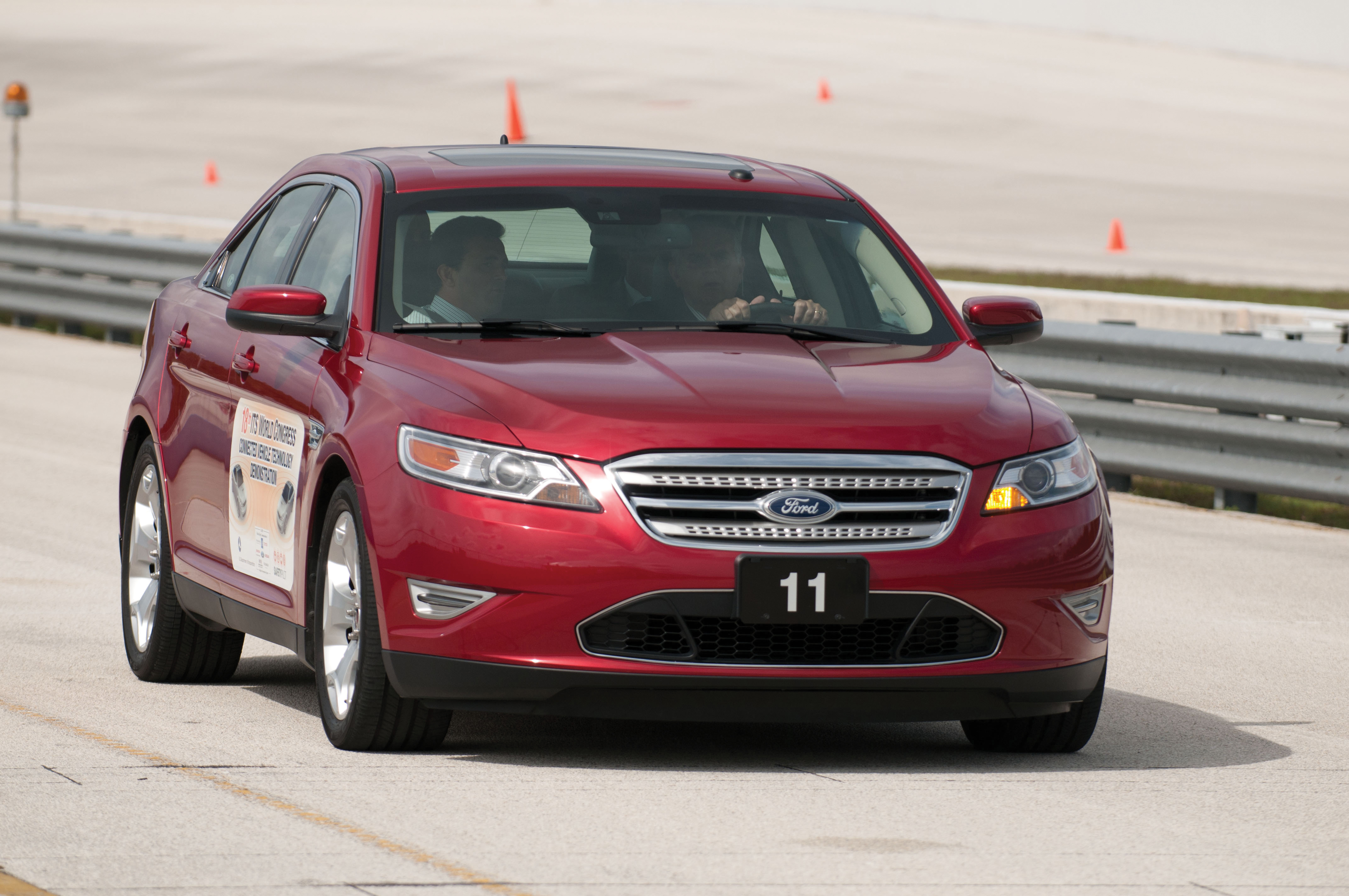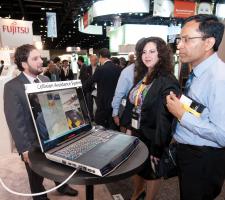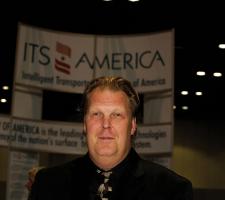
Ask ITS America's new chief technology officer Nu Rosenbohm to comment on ITS in general and common standards in particular and he will talk continuously until interrupted.
This is a man with a passion for his subject. Common protocols and platforms for transport technology are not all he has in his locker for discussion. Rosenbohm's role withEfforts towards common standards, protocols and procedures have featured as a continuous theme throughout though, if not dominated his work so far. It is this subject that Rosenbohm stresses as fundamentally vital for the international ITS industry and the clients and communities it serves.
"I believe that we must standardise ITS protocols and interfaces to enable interoperability, drive down prices and increase competition, which should never be based on proprietary standards or solutions," Rosenbohm says.
"Standardisation is needed at the international level, which is under way. I am very much appreciative of the fact that various governments now have harmonisation agreements in place, between those of America, Europe and Japan, for instance, to standardise cooperative systems. Many of the standards are already in place for defining communication protocols and data sets."
Valuable insights
Rosenbohm is well placed to speak on harmonising of standards. Starting out as a traffic engineer in Germany, his career progressed into design and deployment of traffic signal control for bus prioritisation schemes he before moved to the US to join consultant and software house PB Farradyne in 1994. For Farradyne (acquired by"I owe a lot to that company," he says.
During his time at Farradyne, Rosenbohm was also given the opportunity to work on development of North America's NTCIP (National Transportation Communications for ITS Protocols) suite of standards for communications between central systems and devices. "At the beginning, I was not the domain expert, but served as the writer or editor with the knowledge to support them," he says. A number of NTCIP standards for 'centre to field' communications protocols and data dictionaries were written by Rosenbohm.
Then, for
He has also worked on a standards coordination plan in recent times; cataloging what standards now exist for cooperative systems and determining gaps in what is needed - knowledge which has led to demand for Rosenbohm's insights on the teaching and speaking circuit, nationally and internationally.
"It is very important that standards are taught from a functionality point of view, to help agencies understand how they can get exactly what they want by procuring ITS systems with standards integrated into their tender documents. If done well, this ensures interoperability and long term value," Rosenbohm says. "Also important are considerations of how to test purchased equipment and software and how to maintain it. While communication protocols do not define system design functionality, they enable it. Working to such standards is vital for successful procurement and operation of ITS systems over the long term."
An attractive move
According to Rosenbohm the opportunity to address issues such as interoperability, to play a role in "bringing companies together", was part of the allure of a move to ITS America earlier this year. "I was also impressed by ITS America's engagement in standards development (ITS America has recently reassumed the secretariat of the ISO TC204 international technical committee for ITS standards).The association appreciates how important this is for its members," he says.
Rosenbohm's application was for an advertised position of vice president of operations. But the outcome was an offer to take on the role of chief technology officer, in recognition of his knowledge and advocacy of all things ITS. Previous work has taken him to China, Saudi Arabia and Brazil in an advisory capacity.
For ITS America, in a role that could also be described as technical ambassador, he is supporting the organisation's work with the
International opportunities
All of which fits well with what went on at this year's ITS World Congress in Orlando where ITS International met up with Rosenbohm in October. At least four agreements for collaborative work were signed in Orlando between ITS organisations of America, Australia, France, China, Russia and Korea. One memorandum of understanding signed by"Every time I attend an ITS annual meeting, particularly the World Congress, I feel completely invigorated and speaking to many others, they feel the same. Not originating from the US, I'm very interested in international cooperation, opening up markets for companies to compete and gain business worldwide.
This congress generates a lot of interest and knowledge transfer. Relations are fostered and opportunities discovered. I think it's a great forum for business." Questioned on indications of the health of the ITS sector at present, Rosenbohm points to a huge array of new developments demonstrated in Orlando, such as connected vehicle technology for safety and feeding of valuable data between vehicles and transport authorities. He also quotes from a recent ITS market analysis study produced by ITS America and
"There is a huge potential for ITS and we have found jobs in this industry well paid, above average and normally very secure - healthy compared to other markets," Rosenbohm says.
"There is also massive potential internationally. China is designing ITS systems from the ground up, integrating the technology as a vital part of transport design. Brazil and countries in Europe are doing the same. South Africa, in preparation for the World Cup in 2010, realised significant cost savings by making better use of its existing road network using ITS systems. This is a vital benefit that governments around the world are appreciating more, particularly in developing countries."
Returning from Orlando to ITS America's Washington base, Rosenbohm will be picking up where he left off with projects supporting the US Department of Transportion's connected vehicle research programme (DoT), and work aimed at readying young engineers for the ITS challenges they will face; educating on the building of ITS systems, the potential pitfalls and how to minimise the risks.
Challenging times
While ITS America is "bringing practitioners together" on a variety of subjects, the ITS sector in general is making good progress with the technologies, Rosenbohm adds. But make no mistake, despite the positive outlook in technology terms, these are challenging times."Clearly the current economic downturn has hindered infrastructure investment in general, but the ITS sector specifically can help its own prospects.
There is room for improvement," Rosenbohm says. "We need to increase competition to bring down costs, by continuing efforts towards standardisation, in such a way that encourages innovation to flourish without being detrimental to systems already in place." Rosenbohm, like many working in US transportation, is also hoping for the stability of a new reauthorisation bill in place of more short term extensions.
"Without the certainty of long term legislation, it is difficult for states and local governments to enter into contracts and for ITS companies to invest their own resources," Rosenbohm says. An example of positive movement might be the decision by the US DoT's
"A favourable result would create many new opportunities," Rosenbohm says.
"We need to get across to agencies that ITS technology will address challenges while driving down costs, that there will be substantial returns on investment and that there are different funding models available now. We have public private partnerships, willing investors and for travel information at least, opportunities for authorities to reduce costs through smarter use of data or partnering with companies offering subscription based services." Sophisticated gathering of data, analysis and modelling of traffic behaviour are growing more powerful and useful for transport authorities - driving the market forward, according to Rosenbohm. As was evident in Orlando, private sector suppliers are offering ever more valuable data services, in competition, which is keeping prices attractive for public sector clients. It would seem that questions over who should provide the information are negated in such a free market. Arguably, it does not matter how the data gets to the end user, as long as it results in better performance and safety overall.
"There are many different models for collection and communication of data now," Rosenbohm says. "Who should own it or provide it is no longer an issue.
There is no one size fits all in terms of desired solutions, but authorities and suppliers in partnership have shown they can make it work."







